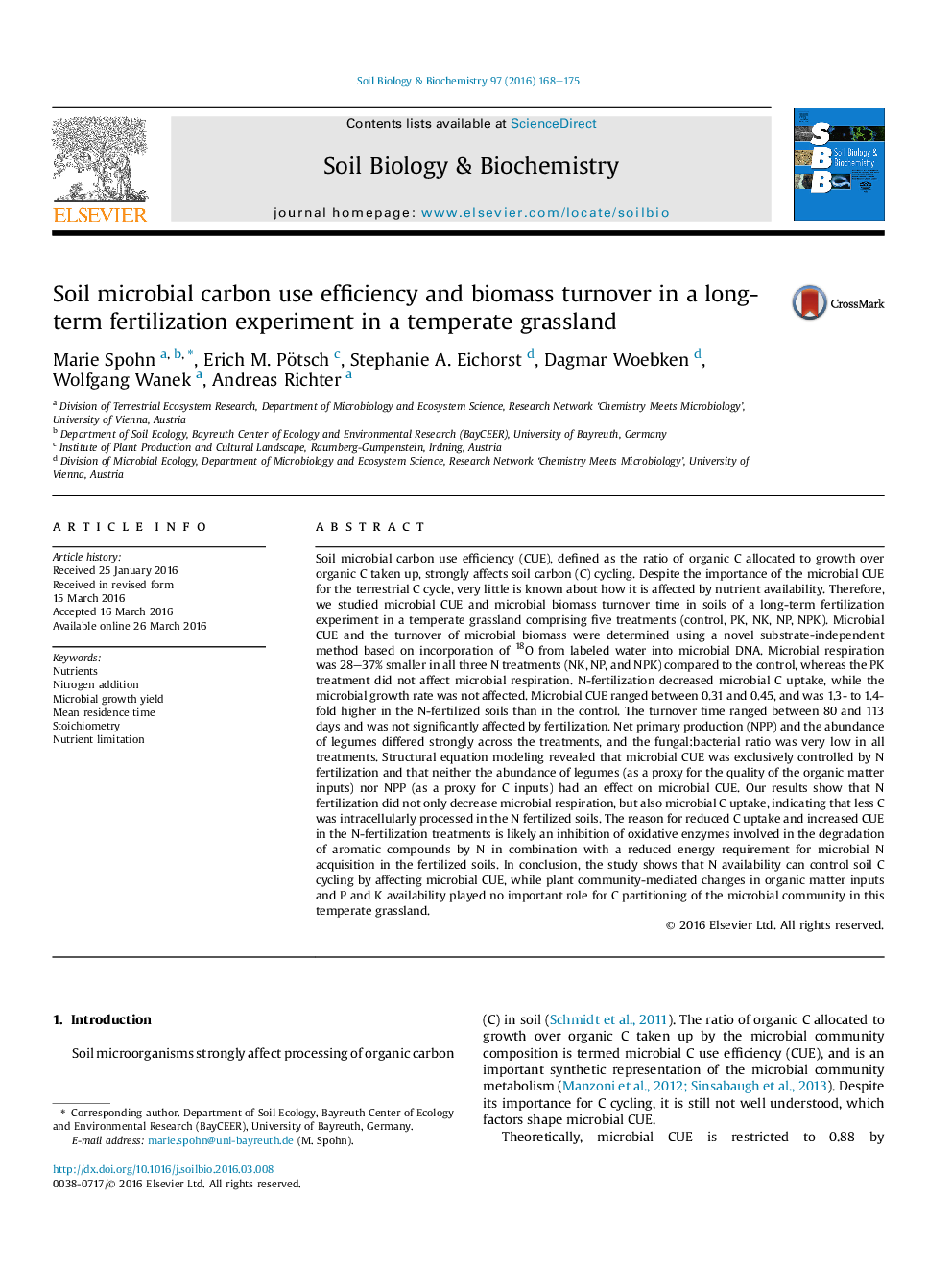| کد مقاله | کد نشریه | سال انتشار | مقاله انگلیسی | نسخه تمام متن |
|---|---|---|---|---|
| 2024331 | 1542587 | 2016 | 8 صفحه PDF | دانلود رایگان |
• Microbial DNA was labeled with 18OH2O to determine microbial growth.
• Nitrogen but not phosphorus or potassium fertilization increased microbial C use efficiency.
• Nitrogen fertilization decreased microbial C uptake.
• Net primary production and legumes did not affect microbial C use efficiency.
• Microbial biomass turnover time was on average 95 days irrespective of fertilization.
Soil microbial carbon use efficiency (CUE), defined as the ratio of organic C allocated to growth over organic C taken up, strongly affects soil carbon (C) cycling. Despite the importance of the microbial CUE for the terrestrial C cycle, very little is known about how it is affected by nutrient availability. Therefore, we studied microbial CUE and microbial biomass turnover time in soils of a long-term fertilization experiment in a temperate grassland comprising five treatments (control, PK, NK, NP, NPK). Microbial CUE and the turnover of microbial biomass were determined using a novel substrate-independent method based on incorporation of 18O from labeled water into microbial DNA. Microbial respiration was 28–37% smaller in all three N treatments (NK, NP, and NPK) compared to the control, whereas the PK treatment did not affect microbial respiration. N-fertilization decreased microbial C uptake, while the microbial growth rate was not affected. Microbial CUE ranged between 0.31 and 0.45, and was 1.3- to 1.4-fold higher in the N-fertilized soils than in the control. The turnover time ranged between 80 and 113 days and was not significantly affected by fertilization. Net primary production (NPP) and the abundance of legumes differed strongly across the treatments, and the fungal:bacterial ratio was very low in all treatments. Structural equation modeling revealed that microbial CUE was exclusively controlled by N fertilization and that neither the abundance of legumes (as a proxy for the quality of the organic matter inputs) nor NPP (as a proxy for C inputs) had an effect on microbial CUE. Our results show that N fertilization did not only decrease microbial respiration, but also microbial C uptake, indicating that less C was intracellularly processed in the N fertilized soils. The reason for reduced C uptake and increased CUE in the N-fertilization treatments is likely an inhibition of oxidative enzymes involved in the degradation of aromatic compounds by N in combination with a reduced energy requirement for microbial N acquisition in the fertilized soils. In conclusion, the study shows that N availability can control soil C cycling by affecting microbial CUE, while plant community-mediated changes in organic matter inputs and P and K availability played no important role for C partitioning of the microbial community in this temperate grassland.
Journal: Soil Biology and Biochemistry - Volume 97, June 2016, Pages 168–175
